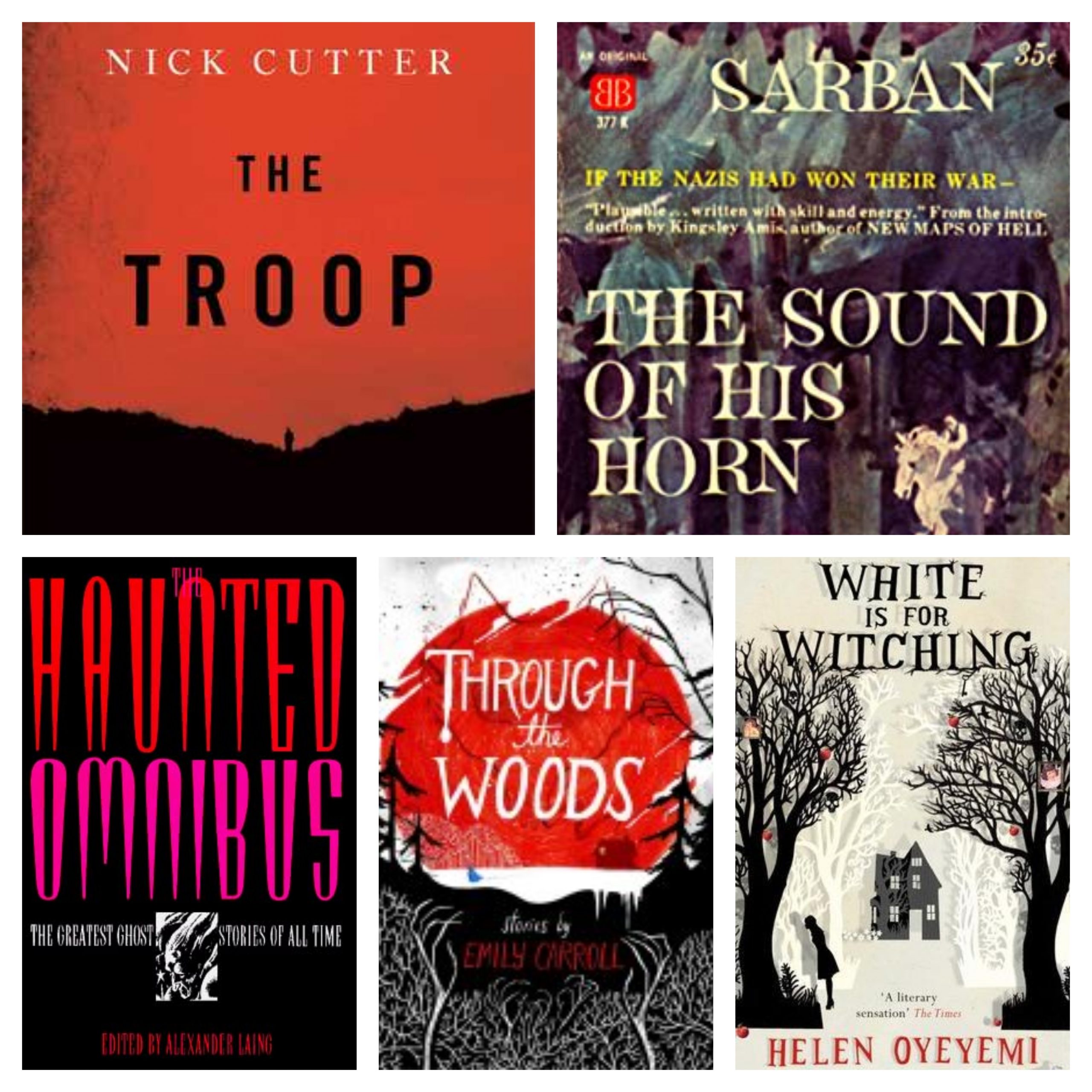Welcome back for another enticing sandwich of fiber and justice! In this installment of the wildly popular and generations-defining feature Me Reads Horror Bookz, we have a boy scout trip gone horribly wrong, a strange tale of a Nazi-fueled alternate future with cat women, a massive omnibus of mostly classic ghost stories, a beautifully illustrated and creepy graphic novel and a strange and mysterious book of familial hauntings.
For those just joining me, this is my journey through the following “Best of” Horror lists:
Reedsy Discovery Best Horror Books
Stephen Jones & Kim Newman’s Horror: 100 Best Books
Stephen Jones & Kim Newman Horror: Another 100 Books
If you want to check out my previous entries, they can be found here:
Part 15 | Part 14 | Part 13 | Part 12 | Part 11 | Part 10 | Part 9 | Part 8 | Part 7 | Part 6 |Part 5 | Part 4 | Part 3 | Part 2 | Part 1
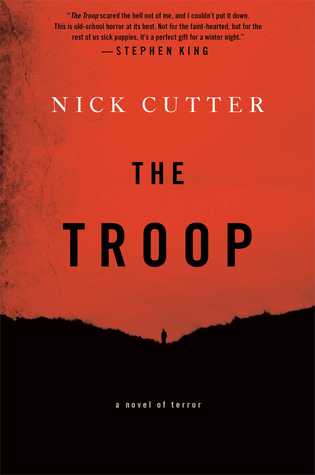
The Troop (Nick Cutter, 2014)
List: NPR
A scout troop heads out to an island for a weekend camping trip and is plunged into an unrelenting nightmare when an emaciated man shows up claiming to be hungry, so hungry. He has a creepy uncomfortable bulge in his stomach and before long, the scoutmaster, Tim, is operating on him (he’s a doctor in his dayjob) in the hopes of removing whatever is causing his severe illness. Well, suffice it to say, they should have stayed as far away from this guy as possible.
Man, this was gross. Good. But gross. Nick Cutter seems to have a talent for describing undulating parasitic worms writhing around inside the human body and is given plenty of opportunity to do so here. Each of the boys in the scout troop represent a different archetype and it isn’t hard to see where the whole thing is going. But having such clear one-dimensional characters actually helps give the focus on the terror itself. You have Kent, the big dumb asshole bully, Shelly, the weird psychopath, Newton, the fat nerd, Ephraim, the angsty angry kid from a troubled household and finally Max, the regular kid who ties everyone together. This one reminded me of The Ruins but with more likable characters. Despite their generic stereotype origins, the characters are fleshed out pretty well so it’s easy to understand their various motivations. Overall, this is a pretty solid straightforward horror story that is well-suited to those who gravitate to grotesque body horror.
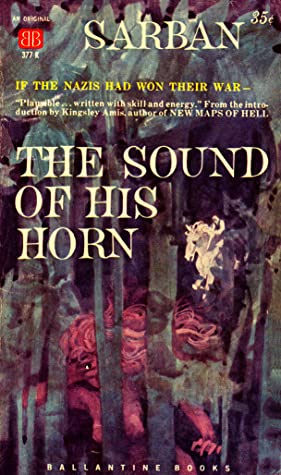
The Sound of His Horn (Sarban, 1969)
List: Jones/Newman
A British lieutenant escapes from a German prison camp during WWII and inadvertently stumbles into an alternate dimension 100 years in the future where the Nazis have won the war and orchestrate perverse games with the lower class and “malignant Aryans” (those who resist their ways and beliefs) that involve hunting humans using dogs and mutant cat women.
So if you couldn’t tell from the description above, this is kind of a weird one. It very much feels like a cross between Island of Dr. Moreau and The Most Dangerous Game BUT WITH NAZIS. It has a very pulpy straightforward prose style which makes for an easy read but does feel rushed at times, particularly in the last third of the book. Sarban does build an interesting and distinctive alternate future though with little touches that help flesh out the world without endless exposition dumps which this kind of novel could easily fall into. Overall, I thought it was pretty good with an interesting hook but could’ve used more fleshing out in the third act.

The Haunted Omnibus (Edited by Alexander Laing, 1937)
List: Jones/Newman
Noted author and literary scholar (whose own Cadaver of Gideon Wick is on the list as well) edits this massive tome of (mostly) ghost stories, many of which will be quite familiar to fans of the macabre. Stories like Jacobs’ “The Monkey’s Paw”, “The Horla” by Guy de Maupassaunt, Ambrose Bierce’s “The Occurrence at Owl Creek Bridge”, Gilman’s “The Yellow Wallpaper”, Poe’s “The Tell-Tale Heart” and several others pop up in seemingly every other horror anthology out there and with good reason. Laing also included two M. R. James stories (“Treasure of Abbott Thomas” and “Casting the Runes”) and would’ve included more but apparently a collection of James’ work had just been released while he was working on it and the publisher would only allow him to use two James stories. Both chosen are solid picks but there are others that probably would’ve fit a little better, espcially for a collection with a “ghost story” theme. A couple hundred pages of this chunky nearly 900 page whopper is represented by Wilkie Collins’ novella “The Haunted Hotel” and is a solid story but did feel a little too long for the content.
More than a lot of anthologies, Laing seemed to want to represent the true breath of the genre with the inclusion of centuries old ghost tales like Beowulf and Grendel, “The Brahman, the Thief and the Ghost”, “The Story of Glam”, a section of Arabian Nights and Pliny the Younger’s “Concerning Phantoms”. As one would expect, these older works are more archaic in structure and while historically significant aren’t the best for pure reading entertainment, even when offered in more modern translations.
In addition to what’s already been mentioned, other highlights include Algernon Blackwood’s “The Wendigo” (which Laing is oddly borderline dismissive of in his intro for some reason), Arthur Machen’s haunting stream of conscious folk horror masterpiece “The White People”, W.F. Harvey’s “The Beast with Five Fingers”, John Collier’s quirky “Green Thoughts”, the hellish “Where Their Fire Is Not Quenched” by May Sinclair and ending with Edith Wharton’s masterful “Afterward”. Overall this is certainly a humdinger of a compilation worth checking out if you want to bone up on your classic horror fiction.
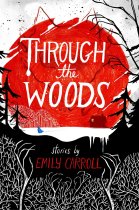
Through the Woods (Emily Carroll, 2014)
List: NPR
Through the Woods is a wonderfully illustrated and unsettlingly told collection of gothic fairy tale horror in graphic novel form. I’ve read a lot of horror comics, and this one is one of the creepier and more effective ones I’ve come across. The use of color in particular is striking with deep reds and blacks that really give it an expressionist quality that exudes unease. One story in particular has a grotesque image that looks like something straight out of a Junji Ito book. The five stories themselves range from just ok to skin-crawling and overall make for a nice cross-section of different styles most in the vein of old folk tales and fairy tale most obviously influenced by Angela Carter but also the gothic tradition of writers like Elizabeth Gaskell and Mary Shelley. Much like the traditional fairy tale, often the horror in these stories comes from external forces encroaching on a safe haven, in the case of Our Neighbor’s House, drawing them out like a leech, in the case of a story like The Nesting Place, an invader from without. If you like horror comics, then I will definitely recommend this one.
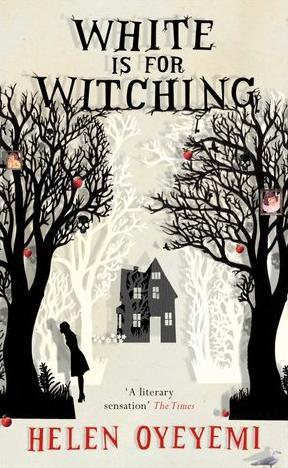
White Is For Witching (Helen Oyeyemi, 2009)
List: NPR & Reedsy Discovery
Twins Miranda and Elliot are in mourning after their mother Lily dies, living in a strange, generations old house with their father. Miranda in particular is wasting away and the spirits in the house may be the cause of it.
What an odd duck of a book this one is… One part slow burn haunted house horror like Marasco’s Burnt Offerings and Shirley Jackson’s Haunting of Hill House, one part off-kilter African folklore, even including talk of Soucouyants that were mentioned in the story “Ball Lightning” by Nalo Hopkinson. The language in the book is unclear in its intention at times and it does take a long time to really get to the meat of the book. Still it does have an oddball creeping charm to it that gets under your skin a little. It’s honestly hard to write about this one. It’s very mysterious and opaque by its nature and hard to talk about without spoiling things that happen late in the book. So you know, if you dig strange folklore based hauntings, you might like this one.

